 House prices have been rising strongly in London. According to the Halifax House Price index, house prices in London in the first quarter of 2014 were 15.5% higher than a year ago. This compares with 8.7% for the UK as a whole, 1.3% for the North of England and –1.5% for Scotland. CPI inflation was just 1.6% for the same 12-month period.
House prices have been rising strongly in London. According to the Halifax House Price index, house prices in London in the first quarter of 2014 were 15.5% higher than a year ago. This compares with 8.7% for the UK as a whole, 1.3% for the North of England and –1.5% for Scotland. CPI inflation was just 1.6% for the same 12-month period.
The London housing market has been stoked by rising incomes in the capital, by speculation that house prices will rise further and by easy access to mortgages, fuelled by the government’s Help to Buy scheme, which allows people to put down a deposit of as little as 5%. House prices in London in the first quarter of 2014 were 5.3 times the average income of new mortgage holders, up from 3.5 times in the last quarter of 2007, just before the financial crisis.
Concerns have been growing about increasing levels of indebtedness, which could leave people in severe financial difficulties if interest rates were to rise significantly. There are also concerns that an increasing proportion of people are being priced out of the housing market and are being forced to remain in the rental sector, where rents are also rising strongly.
But how can the housing market in London be dampened without dampening the housing market in other parts of the country where prices are barely rising, and without putting a break on the still relatively fragile recovery in the economy generally?

The Governor of the Bank of England has just announced two new measures specific to the housing market and which would apply particularly in London.
The first is to require banks to impose stricter affordability tests to new borrowers. Customers should be able demonstrate their ability to continue making their mortgage payments if interest rates were 3 percentage points higher than now.
The second is that mortgage lenders should restrict their lending to 4½ times people’s income for at least 85% of their lending.
Critics are claiming that these measures are likely to be insufficient. Indeed, Vince Cable, the Business Secretary, has argued for a limit of 3½ times people’s income. Also banks are already typically applying a ‘stress test’ that requires people to be able to afford mortgage payments if interest rates rose to 7% (not dissimilar to the Bank of England’s new affordability test).
The videos and articles look at the measures and consider their adequacy in dealing with what is becoming for many living in London a serious problem of being able to afford a place to live. They also look at other measures that could have been taken.
Webcasts and Podcasts
 The Bank of England announces plans for a new affordability test BBC News (26/6/14)
The Bank of England announces plans for a new affordability test BBC News (26/6/14)
 Bank of England moves to avert housing boom BBC News, Simon Jack (26/6/14)
Bank of England moves to avert housing boom BBC News, Simon Jack (26/6/14)
 Bank of England to act on house prices in south-east BBC News, Robert Peston (25/6/14)
Bank of England to act on house prices in south-east BBC News, Robert Peston (25/6/14)
 Bank of England measures ‘insure against housing boom’ BBC News, Robert Peston (26/6/14)
Bank of England measures ‘insure against housing boom’ BBC News, Robert Peston (26/6/14)
 Carney: There is a ‘new normal’ for interest rates BBC Today Programme, Mark Carney (27/6/14)
Carney: There is a ‘new normal’ for interest rates BBC Today Programme, Mark Carney (27/6/14)
Articles
Bank of England imposes first limits on size of UK mortgages Reuters, Ana Nicolaci da Costa and Huw Jones (26/6/14)
Stability Report – Mark Carney caps mortgages to cool housing market: as it happened June 26, 2014 The Telegraph, Martin Strydom (26/6/14)
Bank of England cracks down on mortgages The Telegraph, Szu Ping Chan (26/6/14)
Mortgage cap ‘insures against housing boom’ BBC News (26/6/14)
Viewpoints: Is the UK housing market broken? BBC News (26/6/14)
How can UK regulators cool house prices? Reuters (25/6/14)
Bank will not act on house prices yet, says Carney The Guardian, Jill Treanor and Larry Elliott (26/6/14)
Mark Carney’s housing pill needs time to let economy digest it The Guardian, Larry Elliott (26/6/14)
Bank Of England Admits Plans To Cool Housing Market Will Have ‘Minimal’ Impact Huffington Post, Asa Bennett (26/6/14)
Carney Surprises Are Confounding Markets as U.K. Central Bank Manages Guidance Bloomberg, Scott Hamilton and Emma Charlton (26/6/14)
House prices: stop meddling, Mark Carney, and bite the bullet on interest rates The Telegraph, Jeremy Warner (27/6/14)
Mark Carney’s Central Bank Mission Creep Bloomberg, Mark Gilbert (26/6/14)
Consultation paper
Implementing the Financial Policy Committee’s Recommendation on loan to income ratios in mortgage lending Bank of England (26/6/14)
Bank of England consults on implementation of loan-to-income ratio limit for mortgage lending Bank of England News Release (26/6/14)
Data
Links to sites with data on UK house prices Economic Data freely available online, The Economics Network
Questions
- Identify the main factors on the demand and supply sides that could cause a rise in the price of houses. How does the price elasticity of demand and supply affect the magnitude of the rise?
- What other measures could have been taken by the Bank of England? What effect would they have had on the economy generally?
- What suggests that the Bank of England is not worried about the current situation but rather is taking the measures as insurance against greater-than-anticipated house price inflation in the future?
- Why are UK households currently in a ‘vulnerable position’?
- What factors are likely to determine the future trend of house prices in London?
- Is house price inflation in London likely to stay significantly above that in other parts of the UK, or is the difference likely to narrow or even disappear?
- Should the Bank of England be given the benefit of the doubt in being rather cautious in its approach to dampening the London housing market?
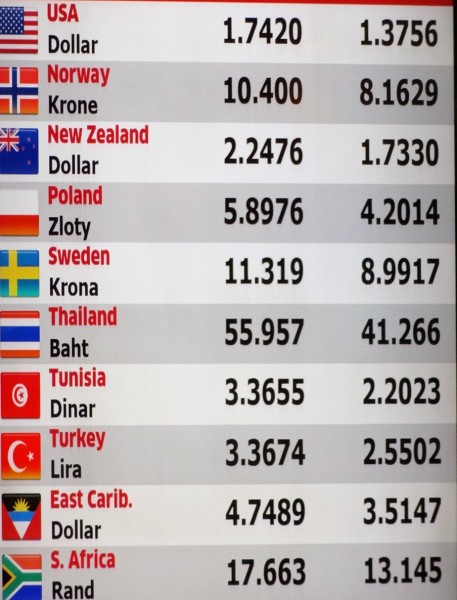 According to latest evidence from the Bank for International Settlements, in April 2013 some £3.2 trillion ($5.3 trillion) of foreign exchange was traded daily on global foreign exchange (forex) markets. About 40% of forex dealing goes through trading rooms in London. This market is highly profitable for the UK economy. But all is not well with the way people trade. There is a scandal about rate fixing.
According to latest evidence from the Bank for International Settlements, in April 2013 some £3.2 trillion ($5.3 trillion) of foreign exchange was traded daily on global foreign exchange (forex) markets. About 40% of forex dealing goes through trading rooms in London. This market is highly profitable for the UK economy. But all is not well with the way people trade. There is a scandal about rate fixing.
Exchange rates on the forex market are freely determined by demand and supply and fluctuate second by second, 24 hours a day, except for weekends. Nevertheless, once a day rates are fixed for certain trades. At 4pm GMT a set of reference rates is set for corporate customers by banks and other traders. The rates are set at the free market average over the one minute from 16:00 to 16:01. The allegation is that banks have been colluding, through text messaging and chat rooms, to manipulate the market over that one minute.
Since the early summer of 2013, the Financial Conduct Authority (FCA) in the UK, along with counterparts in the USA, Switzerland, Hong Kong and elsewhere, has been looking into these allegations. Last week (4/3/14), the Bank of England suspended a member of its staff as part of its own investigation into potential rigging of the foreign exchange market. The allegation is not that the staff member(s) were involved in the rigging but that they might have known about it. The Bank said that, “An oversight committee will lead further investigations into whether bank officials were involved in forex market manipulation or were aware of manipulation, or at least the potential for such manipulation.”
The Bank said that, “An oversight committee will lead further investigations into whether bank officials were involved in forex market manipulation or were aware of manipulation, or at least the potential for such manipulation.”
Meanwhile, the House of Commons Treasury Select Committee has been questioning Bank of England staff, including the governor, Mark Carney, about the scandal. Speaking to the Committee, Martin Wheatley, head of the FCA said that the investigation over rigging had been extended to 10 banks and that the allegations are every bit as bad as they have been with Libor.
Forex rigging ‘as serious as’ Libor scandal: Carney Yahoo News, Roland Jackson (11/2/14)
Forex manipulation: How it worked HITC (Here Is The City), Catherine Boyle (11/3/14)
Bank of England Chief Grilled Over Forex Scandal ABC News, Danica Kirka (11/3/14)
Carney Faces Grilling as Currency Scandal Snares BOE Bloomberg, Scott Hamilton and Suzi Ring (10/3/14)
UK financial body urges quick action over foreign exchange ‘fixing’ Reuters, Huw Jones (11/3/14)
Timeline -The FX “fixing” scandal Reuters, Jamie McGeever (11/3/14)
Forex in the spotlight Financial Times (16/2/14)
Forex scandal: What is that all about? BBC News (11/3/14)
 Bank of England in shake-up after rate manipulation criticism BBC News (11/3/14)
Bank of England in shake-up after rate manipulation criticism BBC News (11/3/14)
 Mark Carney faces Forex questions from MPs BBC News, Hugh Pym (11/3/14)
Mark Carney faces Forex questions from MPs BBC News, Hugh Pym (11/3/14)
Bank of England’s Paul Fisher: ‘It’s not our job to go hunting for market wrongdoing’ Independent, Russell Lynch , Ben Chu (11/3/14)
Questions
- For what reasons would sterling appreciate against the dollar?
- Most of forex trading is for speculative purposes, rather than for financing trade or investment. Why is this and does it benefit international trade?
- If foreign exchange rates fluctuate, is it not a good thing that banks collude to agree the 4pm fixed rate? Explain.
- What was the Libor scandal? Why are some people arguing that the current forex scandal is worse?
- What can the FCA do to prevent collusion over exchange rates?
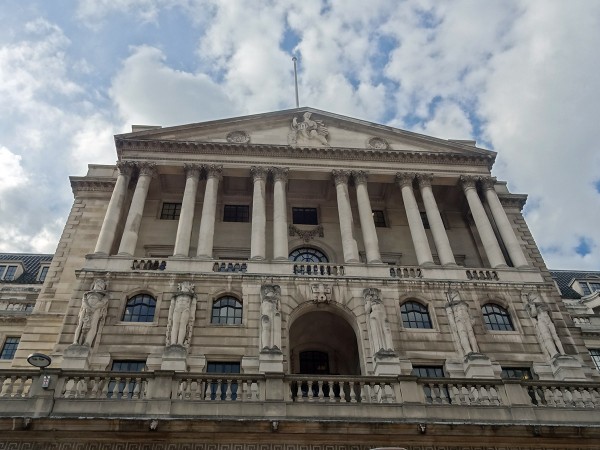 With the publication of the February 2014 Inflation Report the Bank of England has adjusted its forward guidance to the markets.
With the publication of the February 2014 Inflation Report the Bank of England has adjusted its forward guidance to the markets.
As we saw in Part 1 of this blog, the economy should soon fall below the 7% unemployment threshold adopted in the original forward guidance issued last August. But the Bank feels that there is still too much slack in the economy to raise interest rates when unemployment does fall below 7%.
The Bank has thus issued a new vaguer form of forward guidance.
The MPC’s view is that the economy currently has spare capacity equivalent to about 1%–1½% of GDP, concentrated in the labour market. Around half of that slack reflects the difference between the current unemployment rate of 7.1% and an estimate of its
medium-term equilibrium rate of 6%–6½%. The remaining slack largely reflects a judgement that employees would like to work more hours than is currently the case. Companies appear to be operating at close to normal levels of capacity, although this is subject to some uncertainty.
The existence of spare capacity in the economy is both wasteful and increases the risk that inflation will undershoot the target in the medium term. Moreover, recent developments in inflation mean that the near-term trade-off between keeping inflation close to the target and supporting output and employment is more favourable than at the time the MPC announced its guidance last August: CPI inflation has fallen back to the 2% target more quickly than anticipated and, with domestic costs well contained, is expected to remain at, or a little below, the target for the next few years. The MPC therefore judges that there remains scope to absorb spare capacity further before raising Bank Rate.
Just what will determine the timing and pace of tightening? The Bank identifies three factors: the sustainability of the recovery; the extent to which supply responds to demand; and the evolution of cost and price pressures. But there is considerable uncertainty about all of these.
Thus although this updated forward guidance suggests that interest rates will not be raised for some time to come, even when unemployment falls below 7%, it is not at all clear when a rise in Bank Rate is likely to be, and then how quickly and by how much Bank Rate will be raised over subsequent months. Partly this is because of the inevitable uncertainty about future developments in the economy, but partly this is because it is not clear just how the MPC will interpret developments.
So is this new vaguer forward guidance helpful? The following articles address this question.
Articles
Bank of England Governor Carney’s statement on forward guidance Reuters (12/2/14)
Why has Mark Carney tweaked forward guidance? The Telegraph, Denise Roland (12/2/14)
Interest rates: Carney rips up ‘forward guidance’ policy Channel 4 News (12/2/14)
Forward guidance version 2: will the public believe it? The Guardian, Larry Elliott (12/2/14)
Mark Carney adjusts Bank interest rate policy BBC News (12/2/14)
Mark Carney’s almost promise on rates BBC News, Robert Peston (12/2/14)
Did the Bank of England’s Forward Guidance work? Independent, Ben Chu (2/2/14)
Forward Guidance 2.0: Is Carney just digging with a larger shovel? Market Watch, The Tell (12/2/14)
The U.K. Economy: Five Key Takeaways Wall Street Journal, Alen Mattich (12/2/14)
Bank of England pages
Inflation Report, February 2014 Bank of England (12/2/14)
Monetary Policy Bank of England
MPC Remit Letters Bank of England
Forward Guidance Bank of England
Questions
- Summarize the new forward guidance given by the Bank of England.
- Why is credibility an important requirement for policy?
- What data would you need to have in order to identify the degree of economic slack in the economy?
- Why is it difficult to obtain such data – at least in a reliable form?
- What is meant by the ‘output gap’? Would it be a good idea to target the output gap?
- Is it possible to target the rate of inflation and one or more other indicators at the same time? Explain.
 Although the Monetary Policy Committee (MPC) of the Bank of England is independent in setting interest rates, until recently it still had to follow a precise remit set by the government. This was to target inflation of 2% (±1%), with interest rates set to meet this target in 24 months’ time. But things have changed since the new Governor, Mark Carney, took up office in July 2013. And now things are not so clear cut.
Although the Monetary Policy Committee (MPC) of the Bank of England is independent in setting interest rates, until recently it still had to follow a precise remit set by the government. This was to target inflation of 2% (±1%), with interest rates set to meet this target in 24 months’ time. But things have changed since the new Governor, Mark Carney, took up office in July 2013. And now things are not so clear cut.
The Bank announced that it would keep Bank Rate at the current historically low level of 0.5% at least until unemployment had fallen to 7%, subject to various conditions. More generally, the Bank stated that:
The MPC intends at a minimum to maintain the present highly stimulative stance of monetary policy until economic slack has been substantially reduced, provided this does not entail material risks to price stability or financial stability.
This ‘forward guidance’ was designed to provide more information about future policy and thereby more certainty for businesses and households to plan.
But unemployment has fallen rapidly in recent months. It fell from a 7.7% average for the three months May to July 2013 to 7.1% for the latest available three months (September to November 2013). 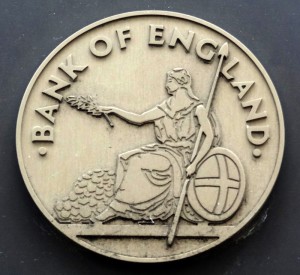 And yet there is still considerable slack in the economy.
And yet there is still considerable slack in the economy.
It now, therefore, looks highly unlikely that the MPC will raise Bank Rate as soon as unemployment falls below 7%. This then raises the question of how useful the 7% target has been and whether, if anything, it has created further uncertainty about future MPC decisions.
The following still appears on the Bank of England website:
The MPC intends at a minimum to maintain the present highly stimulative stance of monetary policy until economic slack has been substantially reduced, provided this does not entail material risks to price stability or financial stability.
But this raises two questions: (a) how do you measure ‘economic slack’ and (b) what constitutes a substantial reduction?
So what should the Bank do now? What, if any, forward guidance should it offer to the markets? Will that forward guidance be credible? After all, credibility among businesses and households is an important condition for any policy stance. According to Larry Elliott in the first article below, there are five options.
Articles
Bank of England’s method of setting interest rates needs reviewing The Guardian, Larry Elliott (9/2/14)
Mark Carney set to adjust Bank interest rate policy BBC News (12/2/14)
Forward guidance: dead and alive BBC News, Robert Peston (11/2/14)
What “forward guidance” is, and how it (theoretically) works The Economist (11/2/14)
BOE’s forward guidance 2.0: Cheap talk, or big change? Market Watch (11/2/14)
Bank of England pages
Monetary Policy Bank of England
MPC Remit Letters Bank of England
Forward Guidance Bank of England
Questions
- What data would you need to have in order to identify the degree of economic slack in the economy?
- Why is it difficult to obtain such data – at least in a reliable form?
- Why might the issuing of the forward guidance last July have itself contributed to the fall in unemployment?
- Why is it difficult to obtain such data – at least in a reliable form?
- Why is credibility an important requirement for policy?
- Why may LFS unemployment be a poor guide to the degree of slack in the economy?
- Discuss the relative merits of each of the five policy options identified by Larry Elliott.
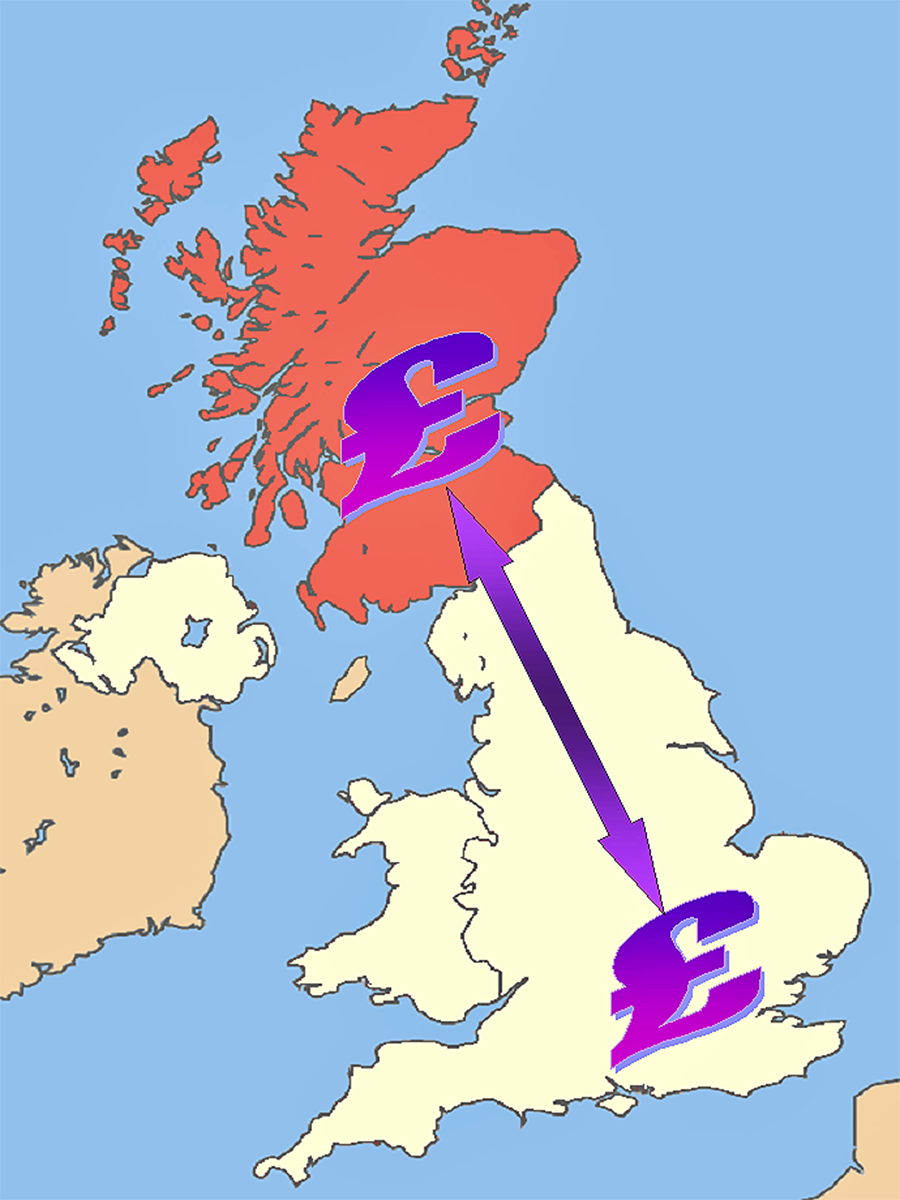 In a speech in Edinburgh, Mark Carney, Governor of the Bank of England, considered the implications of Scotland retaining the pound if the Scottish people vote yes for independence. His speech was intended to be non-political. Rather he focused on two main questions: first whether a currency union of Scotland and the rest of the UK (RUK) would be an optimal currency area; second how much economic sovereignty would need to be shared with RUK as a consequence of Scotland keeping the pound.
In a speech in Edinburgh, Mark Carney, Governor of the Bank of England, considered the implications of Scotland retaining the pound if the Scottish people vote yes for independence. His speech was intended to be non-political. Rather he focused on two main questions: first whether a currency union of Scotland and the rest of the UK (RUK) would be an optimal currency area; second how much economic sovereignty would need to be shared with RUK as a consequence of Scotland keeping the pound.
On the first question, Mark Carney argued that the current UK is close to an optimal currency area as there is a high degree of economic integration and factor mobility. Sharing a currency eliminates exchange costs, improves pricing transparency and hence encourages competition, promotes cross-border investment, improves the flow of technology and ideas, and increases the mobility of labour and capital.
But sharing a currency involves sharing a monetary policy. This would still be determined by the Bank of England and would have to geared to the overall economic situation of the union, not the specific needs of Scotland.
There would also need to be a banking union, whereby banks in difficulties would receive support from the whole currency area. In Scotland’s case, banking accounts for a very large proportion of the 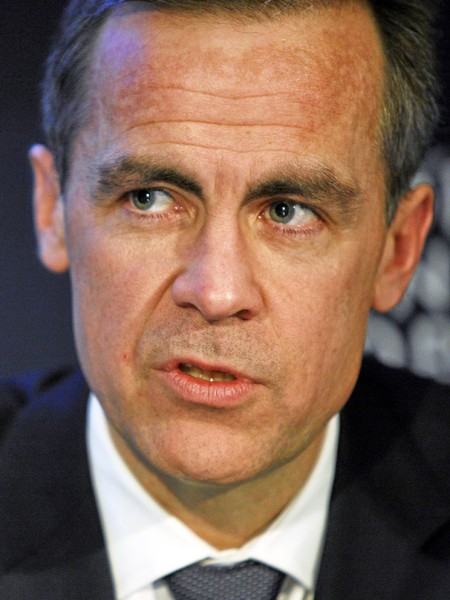 economy (12.5% compared with 4.3% for RUK) and could potentially place disproportionate demands on the currency union’s finances.
economy (12.5% compared with 4.3% for RUK) and could potentially place disproportionate demands on the currency union’s finances.
And then there is the question of fiscal policy. A shared currency also means pooling a considerable amount of sovereignty over taxation, government spending and government debt. This could be a serious problem in the event of asymmetric shocks to Scotland and RUK. For example, if oil prices fell substantially, Scotland may want to pursue a more expansionary fiscal policy just at a time when its tax revenues were falling. This could put a strain on Scotland’s finances. This might then require RUK to provide support from a common pool of funds, such as a ‘regional fund’.
Being in a currency union can amplify fiscal stress, and increase both the risks and consequences of financial instability. In the situation just described [a fall in demand for exports], fiscal policy would ideally help smooth adjustment to the external shock. But its ability to do so could be limited by the budgetary impact of the falls in output, prices and wages. To maintain credibility, fiscal policy may even become pro-cyclical, with the resulting austerity exacerbating the initial fall in demand. In the extreme, adverse fiscal dynamics could call into question a country’s membership of the union, creating the possibility of self-fulfilling ‘runs’ on bank and sovereign debt absent central bank support.6 Such adverse feedback loops turned recessions into depressions in several European countries in recent years.
A separate Scottish currency, by contrast, would, according to Carney, be a valuable shock absorber if domestic wages and prices were sticky.
For example, suppose demand for a country’s exports falls. All else equal, its output will fall, unemployment increase and current account deteriorate. With an independent currency, exchange rate depreciation can dampen these effects by improving competitiveness, and monetary policy can become more accommodative, supporting demand and employment. However, if the country were part of a currency area with its foreign market, its exchange rate would by definition not change, putting the full weight of adjustment on wages and unemployment – a significantly more protracted and painful process. In addition, the responsiveness of monetary policy to weak demand in that country would be diluted by the needs of the broader membership.
But despite the problems of ceding a degree of monetary and fiscal sovereignty, Scotland and RUK are well placed to continue with a successful currency union if Scotland becomes independent. Economic conditions are very similar, as are language, culture and institutions, and there is an effective banking union – assuming such a banking union were to continue post independence.
The existing banking union between Scotland and the rest of the United Kingdom has proved durable and efficient. Its foundations include a single prudential supervisor maintaining consistent standards of resilience, a single deposit guarantee scheme backed by the central government, and a common central bank, able to act as Lender of Last Resort across the union, and also backed by the central government. These arrangements help ensure that Scotland can sustain a banking system whose collective balance sheet is substantially larger than its GDP.
The desirability of Scottish independence is a normative question for the Scottish electorate to decide. Nevertheless, economists have an important part to play in informing the debate. Mark Carney’s economic analysis of currency union if the Scottish electorate votes yes is a good example of this.
Video of speech
 Speech at lunch hosted by the Scottish Council for Development & Industry, Edinburgh Bank of England, Mark Carney (29/1/14)
Speech at lunch hosted by the Scottish Council for Development & Industry, Edinburgh Bank of England, Mark Carney (29/1/14)
Text of speech
The economics of currency unions Bank of England, Mark Carney (29/1/14)
Articles, podcasts and webcasts
Independent Scotland would be forced to cede some sovereignty if it keeps pound, says Carney The Telegraph, Szu Ping Chan (29/1/14)
Scottish independence: Currency debate explained BBC News, Andrew Black (29/1/14)
Scottish independence: Key extracts from Mark Carney speech BBC News (29/1/14)
 Scottish independence: Carney says Scots currency plan may lead to power loss BBC News (29/1/14)
Scottish independence: Carney says Scots currency plan may lead to power loss BBC News (29/1/14)
The sterling price of Scottish independence BBC News, Robert Peston (29/1/14)
Independent Scotland ‘needs to cede sovereignty’ for currency union with UK The Guardian, Severin Carrell (29/1/14)
Mark Carney warns Scotland over currency union hopes Financial Times, Mure Dickie and Sarah O’Connor (29/1/14)
 How independent would Scotland really be? Channel 4 News (29/1/14)
How independent would Scotland really be? Channel 4 News (29/1/14)
BoE’s Mark Carney in currency sovereignty warning The Scotsman, Tom Peterkin (30/1/14)
Carney Says Scotland Must Heed Euro Crisis in Pound Debate Bloomberg, Emma Charlton and Jennifer Ryan (29/1/14)
 Independent Scotland ‘meets criteria’ for currency union BBC Today Programme, Gordon MacIntyre-Kemp and Iain Gray (29/1/14)
Independent Scotland ‘meets criteria’ for currency union BBC Today Programme, Gordon MacIntyre-Kemp and Iain Gray (29/1/14)
Scotland must play a high-stakes poker game with Westminster over the pound The Guardian Larry Elliott (12/2/14)
Questions
- What are the conditions necessary for a successful currency union?
- To what extent do Scotland and RUK meet these conditions?
- What are meant by asymmetric shocks? Give some examples of asymmetric shocks that could affect a Scotland–RUK currency union.
- Why is there a potential moral hazard in a whole currency union providing fiscal support to members in difficulties?
- Why is banking union such an important part of a successful currency union? What lessons can be learned here from the eurozone currency union?
- What constraints would currency union impose on Scottish fiscal policy? Would such constraints exist in an optimal currency area?
 House prices have been rising strongly in London. According to the Halifax House Price index, house prices in London in the first quarter of 2014 were 15.5% higher than a year ago. This compares with 8.7% for the UK as a whole, 1.3% for the North of England and –1.5% for Scotland. CPI inflation was just 1.6% for the same 12-month period.
House prices have been rising strongly in London. According to the Halifax House Price index, house prices in London in the first quarter of 2014 were 15.5% higher than a year ago. This compares with 8.7% for the UK as a whole, 1.3% for the North of England and –1.5% for Scotland. CPI inflation was just 1.6% for the same 12-month period. The Bank of England announces plans for a new affordability test BBC News (26/6/14)
The Bank of England announces plans for a new affordability test BBC News (26/6/14) Bank of England moves to avert housing boom BBC News, Simon Jack (26/6/14)
Bank of England moves to avert housing boom BBC News, Simon Jack (26/6/14) Bank of England to act on house prices in south-east BBC News, Robert Peston (25/6/14)
Bank of England to act on house prices in south-east BBC News, Robert Peston (25/6/14) Bank of England measures ‘insure against housing boom’ BBC News, Robert Peston (26/6/14)
Bank of England measures ‘insure against housing boom’ BBC News, Robert Peston (26/6/14) Carney: There is a ‘new normal’ for interest rates BBC Today Programme, Mark Carney (27/6/14)
Carney: There is a ‘new normal’ for interest rates BBC Today Programme, Mark Carney (27/6/14)





